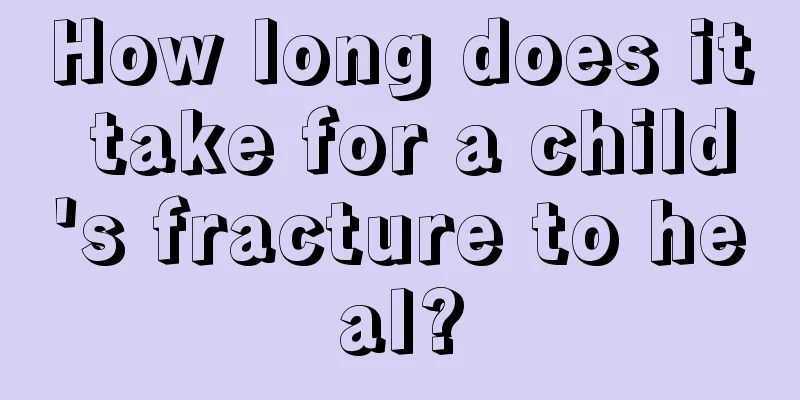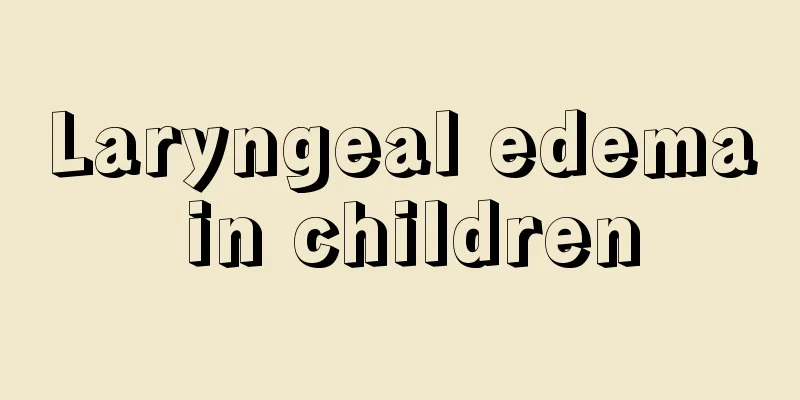How long does it take for a child's fracture to heal?

|
Children like to move a lot, so falling and getting hurt are very common. Children are prone to fractures after falling. Fractures in children must be treated as soon as possible, and the treatment must be suitable for the child. Treatment methods should not be used indiscriminately. How long will it take for a child to recover from a fracture? This also depends on the specific situation of the child. The recovery period varies greatly depending on the child's physical condition and constitution. Children are young and in the growth and development period, so they recover faster than adults. However, it usually takes about 2-3 months for the disease to fully heal. It usually takes about 20-30 days to remove the plaster, depending on the child's fracture recovery. When the injury first occurs and the child is in a cast, local blood circulation will be affected to a certain extent. The child will not be able to move freely and will feel uncomfortable. Try to counsel the child and be careful not to move too much. Giving your child appropriate amounts of milk, bone soup, and dark green vegetables every day will help with calcium absorption and promote faster healing of fractures. Go out and get more sun. Children's fracture injuries are different from those in adults. Children's bones are constantly growing and developing, and their physiological functions and biomechanical properties are constantly changing. Children's bones are less likely to break and displace completely due to their porous texture and hypertrophy of the periosteum. Most children's fractures do not require surgery, but if they occur near joints, especially when the growth plates are injured, surgical reduction is often required. Unlike adults' bones, children's bones can correct themselves after deformities heal, but sometimes they can cause deformities and limb length discrepancies after healing of fractures without deformities. Some children develop deformities because their growth structures are damaged during surgery. In fact, most pediatric fractures can be reduced. Sometimes, if the fracture is not reduced properly and dislocation remains, the child will correct the deformity by himself with his strong plastic ability, of course, within a certain range. However, epiphyseal fractures, intra-articular fractures, etc., if diagnosis and treatment are delayed, may cause abnormal healing and disability. |
<<: What to eat when a baby is weaned
>>: Why do children's feet itch?
Recommend
Do you know the developmental standards of your baby?
The development of the baby often concerns the pa...
What to do if your child is timid
If a child has character defects, it will have a ...
How to prevent children from having a hoarse throat due to a cold
Spring is coming, another sensitive season, and a...
What should I do if my child coughs in the morning and evening?
There are many reasons for children's cough. ...
How to prevent children from coughing and retching?
If a child always coughs and retches, it may be c...
Why do newborns wake up easily when sleeping?
There will be many strange behaviors in babies af...
How to care for children after phimosis surgery?
When children have phimosis, it will seriously hi...
What’s wrong with my child’s swollen neck?
Young children have relatively weak body resistan...
What to do if a newborn has indigestion after breastfeeding
Breast milk is essential for the growth of newbor...
What department should I go to for torticollis in children?
When children with torticollis go to the hospital...
What should children pay attention to when swimming in summer?
The hot weather in summer makes people just want ...
What is Edwards syndrome?
Edwards syndrome is a very common chromosomal tri...
What should I do if my child has a fever and cough recently?
We all know that children are in a period of rapi...
What are the precautions for children's autumn care
With the transition of each season, children with...
The baby suddenly has leg pain and can't walk
Many babies have leg pain in their lives, but aft...









